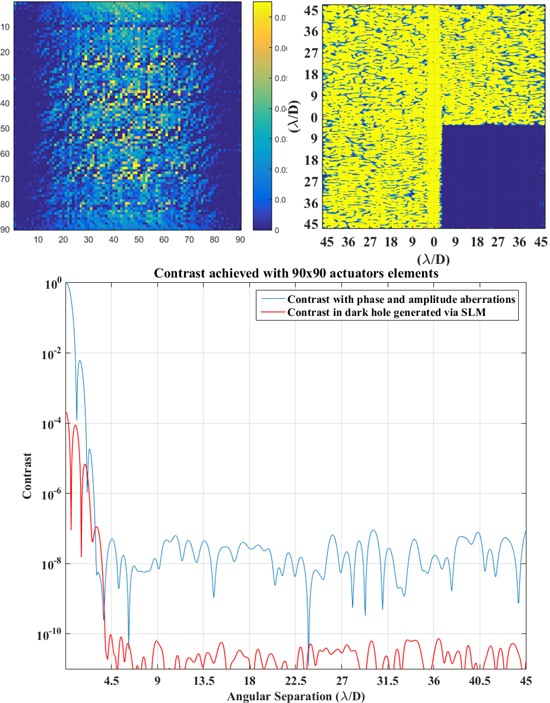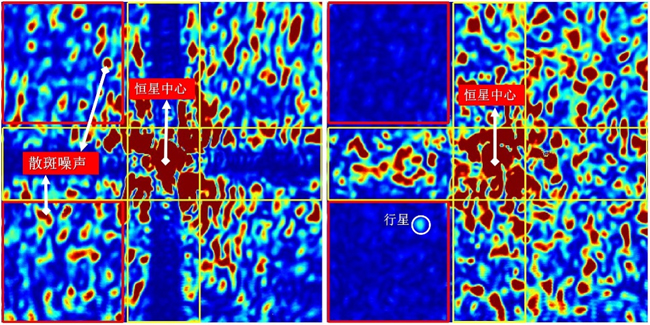Search for exoplanets that host terrestrial life is one of the most fascinating dreams for human beings. One needs to first detect the Earth-mass exoplanets in the habitable zone of a solar type star, and then direct image and associated spectroscope analysis of the planet’s atmosphere, which will allow us to finally answer “Are we alone in the universe?”, by further confirmation of the terrestrial life signals such as O2/O3 and CH4, etc.The direct imaging of terrestrial planets in the habitable zone of a solar type star is very challenging, due to the large luminosity contrast between the planet and its primary star, which can reach 10-10 (one billionth). To achieve such an extreme high-contrast, one needs to suppress the diffraction photon noise from the telescope pupil by introducing a stellar coronagraph (refer to Ren, Dou & Zhu PASP 2010), and control the speckle noise scattered from the system optics.The deformable mirror (DM) has been employed for the wave-front control to remove these speckles. However, the area of the achievable dark hole with a high contrast is very small due to the limitation of current number of the actuating elements in DM, which would have a relatively low efficiency in future space missions.
Recently, the Exoplanets Detection & High-contrast Imaging Group (EDHcI) in NIAOT has made significant breakthrough in the extreme high-contrast space technique. The group has firstly proposed a technique that can achieve extreme high contrast (10-10) in a relatively large area, based on the coronagraph and spatial light modulator (SLM) for wave-front correction. The unique feature of the system will potentially improve the detection efficiency greatly. The associated result has been published in Astrophysical Journal 2016, Nov. 18. (refer to Dou & Ren ApJ 2016, 832, 84)。 Figure 1 presents the numerical simulation of the high-contrast dark hole in a large area. Based on the technique, the demonstration system in NIAOT has achieved a contrast on the order of 10-9 in a large detection area in the year of 2015. Figure 2 shows the test results (for more details, reader can refer toLiu,Ren and Dou et al. 2015).
The research has been supported by the major program of National Science Foundation of China (Grant No. 11433007) and the "Strategic Priority Research Program" of the Chinese Academy of Sciences (2nd & 3rd Run, Grant Nos. of XDA04070600, XDA04075200) and etc (PI: Jiangpei Dou). Currently, the program of “Direct Imaging Research of exoplanets: conceptualdesign and critical technique developments” has passed the technique evaluation by CAS on Oct. 27th,2016.And the research group has fully completed the program with a requirement of 10 times better than the one listed in the proposal, making the research among the top level of the similar international research groups. Through this program, the group has made many important publications in national and international astronomical journals (9 SIC indexed papers from 2015-2016).
EDHcI@ NIAOT has proposed the Cool Planet Imager(CPI)space program, which has been listed in the top among the programs in the Strategic Priority Research Program of CAS, Space Astronomy of Year of 2016-2030. In the next step, the current extreme high-contrast system will be updated with a compact optics system and put in a vacuum tank, with an ultimate contrast goal 10 times better. The research will finally build a solid foundation for the direct imaging research and following spectroscopy of the atmosphere of cool/terrestrial planets in the future space missions, thus will push us into the top level among the international groups.

FIG. 1. Simulation results of extreme high-contrast imaging. Wave-front map provided by SLM (above left), achievedcontrast in the dark-hole (above right); achievable contrast (Blue: 10-7 due to the limitation of speckles. Red: 10-10 after the wave-front correction by SLM).

FIG. 2. Laboratory test result of the extreme high contrast demonstration system. Planet (109 fainter) has been contaminated by speckles (left) and clearly imaged after the wave-front correction (right).













